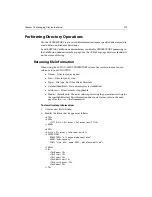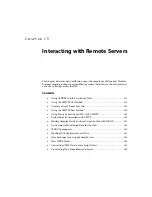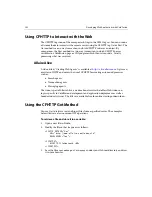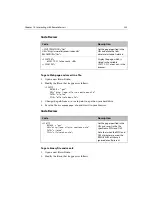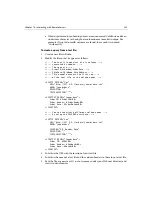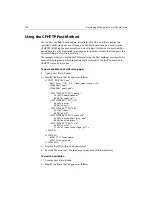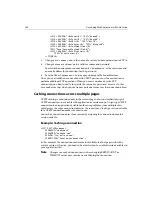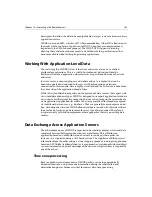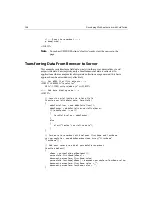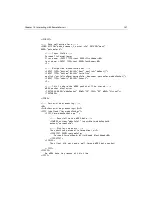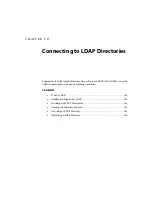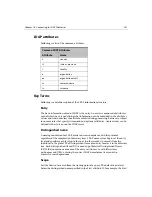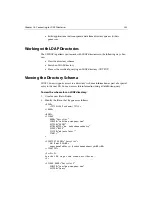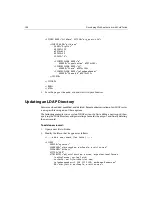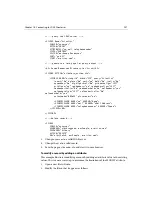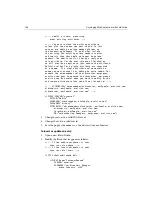
Chapter 15: Interacting with Remote Servers
243
descriptors that allow the data to be manipulated on a target system between arbitrary
application servers.
WDDX is based on XML, which is a W3C Recommendation. Other W3C efforts now in
the works will have obvious application to WDDX when they are completed, most
importantly, the XML-Schema proposal. The WDDX DTD supports versioning,
allowing these and other enhancements to be folded into the specification as they
become available without disrupting working applications.
Working With Application-Level Data
The real strength of WDDX is clear if the client and server are seen as a unified
platform for applications. This is a subtle, but profound, distinction from the
traditional view of an application where services are partitioned between the client
and server.
In client-server, a client might query a database and get a recordset that can be
browsed, updated and returned to the server without requiring a persistent
connection. In this scenario, data is highly-structured and that structure is baked into
the client side of the application ahead of time.
While this style of databinding relies on the presence of data sources that expose well-
structured data of known types, WDDX is designed to transport application-level data
structures to facilitate seamless computing between the client and the server side of a
web application. Application-level data structures generally differ from data exposed
via traditional data sources, e.g., databases. They are generally more complex and ad
hoc, with dynamic structure. WDDX allows developers to work with this data without
the overhead of setting up a datasource for every type of data needed. Therefore, it
integrates nicely with and complements other approaches that rely on existing data
sources.
Data Exchange Across Application Servers
The other common use of WDDX is expected to be sending complex, structured data
seamlessly between different application server platforms. This will allow an
application based on ColdFusion at one business to send a purchase order, for
instance, to a supplier running a CGI-based system. The supplier could then extract
information from the order and pass it to a shipping company running an application
based on ASP. Unlike traditional client-server approaches (including distributed object
systems) minimal to no prior knowledge of the source or target systems is required by
any of the others.
Time zone processing
Because producers and consumers of WDDX packets can be in geographically
dispersed locations, using time zone information during the serialization and
deserialization phases becomes critical for correct date-time processing.
Summary of Contents for COLDFUSION 4.5-DEVELOPING WEB
Page 1: ...Allaire Corporation Developing Web Applications with ColdFusion ColdFusion 4 5...
Page 14: ...xiv Developing Web Applications with ColdFusion...
Page 26: ...xxvi Developing Web Applications with ColdFusion...
Page 34: ...8 Developing Web Applications with ColdFusion...
Page 70: ...44 Developing Web Applications with ColdFusion...
Page 84: ...58 Developing Web Applications with ColdFusion...
Page 114: ...88 Developing Web Applications with ColdFusion...
Page 148: ...122 Developing Web Applications with ColdFusion...
Page 174: ...148 Developing Web Applications with ColdFusion...
Page 208: ...182 Developing Web Applications with ColdFusion...
Page 244: ...218 Developing Web Applications with ColdFusion...
Page 274: ...248 Developing Web Applications with ColdFusion...
Page 288: ...262 Developing Web Applications with ColdFusion...
Page 300: ...274 Developing Web Applications with ColdFusion...
Page 350: ...324 Developing Web Applications with ColdFusion...
Page 362: ...336 Developing Web Applications with ColdFusion...

